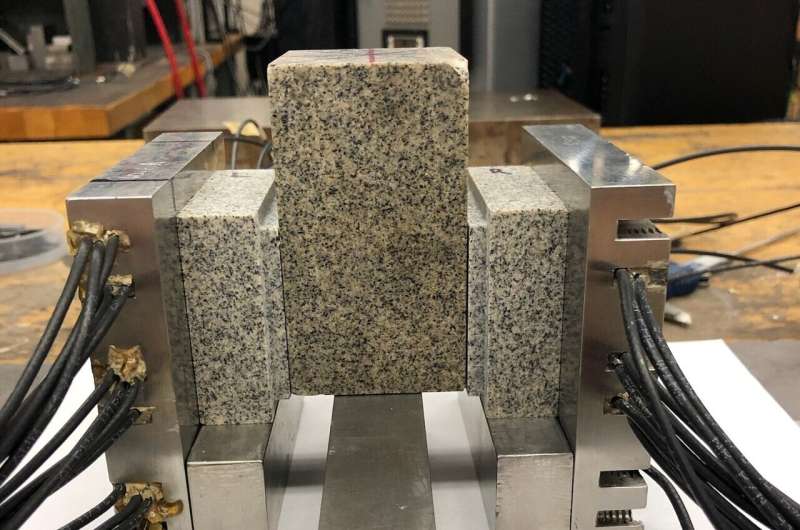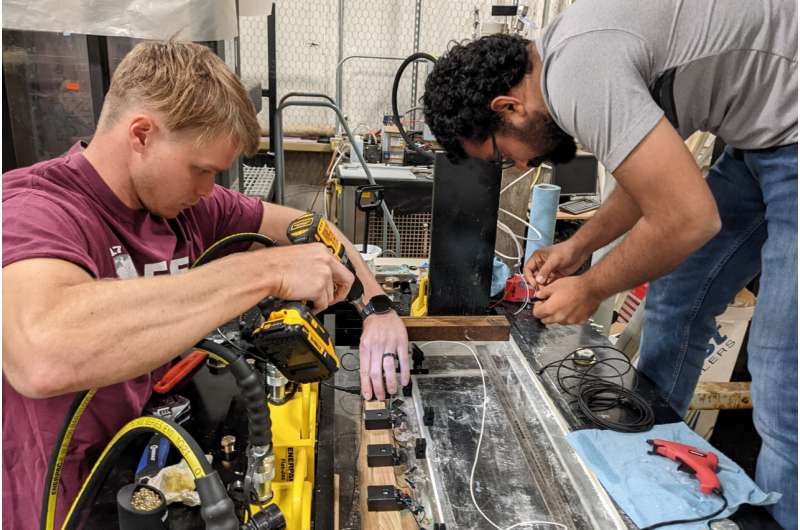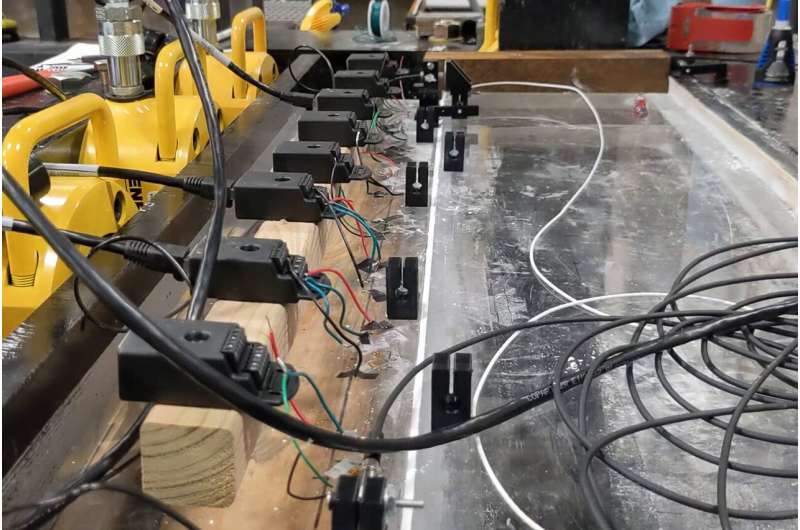This article has been reviewed according to Science X's editorial process and policies. Editors have highlighted the following attributes while ensuring the content's credibility:
fact-checked
peer-reviewed publication
trusted source
proofread
Scientists isolate early-warning tremor pattern in lab-made earthquakes

Researchers at The University of Texas at Austin have successfully isolated a pattern of lab-made "foreshock" tremors. The finding offers hope that future earthquakes could be forecast by the swarm of smaller tremors that come before them.
The research is published in the journal Nature Communications.
The next step is to replicate the results in the real world. Lead researcher Chas Bolton will begin that work this year, starting in Texas, where he hopes to isolate similar patterns in measurements made by the state's seismological network, TexNet.
"If we're ever going to predict or forecast earthquakes then we need to be able to measure, characterize, and understand what's happening right before the earthquake," said Bolton, who did the work while a postdoctoral fellow at the University of Texas Institute for Geophysics (UTIG).
Bolton is now a research associate at UT Austin's Bureau of Economic Geology, which manages TexNet. Both UTIG and the bureau are part of the UT Jackson School of Geosciences.
Earthquakes happen in irregular cycles, making it difficult to know when or where the next one may strike. Although seismic records show that tremors and other geological movements occur before large earthquakes, earthquake faults produce as many random rumbles as meaningful tremors.

Scientists have long searched for clues that could help signal an earthquake is on the way. Bolton's approach involved making his own earthquakes in the lab and looking for patterns in the seismic "noise" that preceded the quakes.
Bolton and collaborators measured earthquake cycles on a miniature lab-made fault at Penn State. The fault is only two inches long—orders of magnitude smaller than the real thing. But experiments revealed a pattern of tremors that got stronger and occurred closer together as the lab earthquake approached. No such pattern was found for slower or weaker earthquakes.
This pattern is significant because it means the tremors are connected to the main shock, Bolton said.
"It gives you a physical explanation for what's controlling the foreshocks," he said.
It also gives researchers a telltale pattern to look for in the real world.

Detecting such patterns won't be easy on faults that are hundreds of miles long and reach deep into the Earth. Still, the findings spotlight why it's so important to wire up real-world faults with seismic monitors that can detect subtle changes in the Earth, said co-author and UTIG Director Demian Saffer.
"If we really want to detect these precursory phenomena, we need sensors and long-term observatories that can monitor these creaks and groans to tell us how the fault is behaving in the lead-up to failure," he said.
Bolton is now experimenting on a much larger, 3-foot-long artificial fault at UTIG. He said the larger lab fault will help improve understanding of how the tremor pattern might play out in nature. The experiments are in addition to his TexNet research, where he will be analyzing tremor sequences in Texas associated with earthquakes greater than magnitude 5. He expects results within a year.
More information: David C. Bolton et al, Foreshock properties illuminate nucleation processes of slow and fast laboratory earthquakes, Nature Communications (2023). DOI: 10.1038/s41467-023-39399-0
Journal information: Nature Communications
Provided by University of Texas at Austin





















